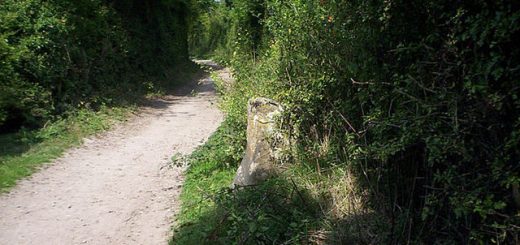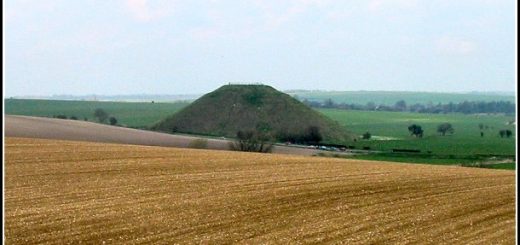Balnuaran of Clava
The Clava Cairns – or more correctly Balnuaran of Clava – is one of the best preserved Bronze Age burial sites in Scotland. There are three cairns here, two with passage ways aligned to the Midwinter sunset, and all with more subtle features, incorporated to reflect the importance of the South-west horizon.
 The site consist of 3 small, relatively well preserved burial chambers, aligned on a North-east to South-west axis. Each cairn consists of a multitude of large water-worn pebbles and boulders, piled in a bun shape, with an outer kerb of larger stones, around which stands a stone circle. The two outer cairns have passages to a central chamber aligned South-west to the Midwinter sun, while the central cairn has only an inner chamber with no connecting passage.
The site consist of 3 small, relatively well preserved burial chambers, aligned on a North-east to South-west axis. Each cairn consists of a multitude of large water-worn pebbles and boulders, piled in a bun shape, with an outer kerb of larger stones, around which stands a stone circle. The two outer cairns have passages to a central chamber aligned South-west to the Midwinter sun, while the central cairn has only an inner chamber with no connecting passage.
The cairns are thought to date from the late Neolithic period, and this type of cairn seems to be a style developed in this part of Scotland, which are collectively known as Clava Cairns. Unlike the larger Neolithic tombs found in other parts of the country, it seems that the tombs at Clava were not used over a long period of time for a large community, rather evidence suggests that they were preserved for more elite members of a tribe. Perhaps a ruling caste or priesthood.
 Some of the large boulders which make up the outer facing of the cairns have been carved with enigmatic cup and ring markings. The true purpose and meaning of these carvings is unknown, and it has been suggested that the cup marked stones may actually date from an earlier period of history, the site being re-used because of its importance. Examining the carved stones it is easy to see that they must have been carved before they were incorporated into the fabric of the cairns. Other more subtle features were incorporated into the construction of the tombs. The kerb stones are graded in size towards the South-west and the Midwinter sun, with the largest facing towards that direction. This grading is also true of the surrounding standing stones. The stones may even be colour graded, as it seems that the more colourful stones also lie to the South-west of the tombs. This attention to geometric detail suggests that the tombs were constructed as part of a larger plan with bias towards the South-west horizon. There may be other subtle landscape features incorporated into the site, which have not yet been discovered.
Some of the large boulders which make up the outer facing of the cairns have been carved with enigmatic cup and ring markings. The true purpose and meaning of these carvings is unknown, and it has been suggested that the cup marked stones may actually date from an earlier period of history, the site being re-used because of its importance. Examining the carved stones it is easy to see that they must have been carved before they were incorporated into the fabric of the cairns. Other more subtle features were incorporated into the construction of the tombs. The kerb stones are graded in size towards the South-west and the Midwinter sun, with the largest facing towards that direction. This grading is also true of the surrounding standing stones. The stones may even be colour graded, as it seems that the more colourful stones also lie to the South-west of the tombs. This attention to geometric detail suggests that the tombs were constructed as part of a larger plan with bias towards the South-west horizon. There may be other subtle landscape features incorporated into the site, which have not yet been discovered.
The site was excavated in 1828, 1857, and in the 1950’s. The early excavations revealed small shards of pottery, bones and flint flakes, and later excavations revealed human bones – some of which were cremated – in each of the outer tombs.
Directions: On a minor road off the B9006 from Inverness.




Re: Balnuaran of Clava
Thanks for the spelling correction annemacdonald 🙂
Re: Balnuaran of Clava
Accidental tourist returns ‘cursed’ stone
A Belgian tourist who took a stone from an ancient Scottish burial site has returned it after complaining it had cursed his family.
Surprised tourism staff received a parcel containing the 2lb stone and an anonymous letter which urged them to return it to its rightful place at Clava Cairns.
The man said that since taking the stone his daughter had broken her leg, his wife had become very ill, and he had lost his job and broken his arm.
Bob Hunter-Dorans, visitor services assistant at Inverness tourist information centre, said: "He thought he was cursed, definitely.
"He said in the letter ‘I know you will probably be laughing at me, but while you are laughing could you please take this stone back to Clava Cairns’."
That site, near Inverness, dates from the Neolithic period and was an extensive burial ground comprising three circles of standing stones with burial chambers in the middle.
Mr Hunter-Dorans said many locals were superstitious about the area and added: "It’s not a place you would want to go at night."
He said of the tourist: "He had gone there and he had noticed a stone that he thought looked like a stone age tool and he took it home as a souvenir.
‘Run of bad luck’
"He got back to Belgium and he had a run of bad luck.
"He decided the start of this coincided with when he brought back the stone and he thought it had something to do with it."
Mr Hunter-Dorans said: "Obviously the guy was deadly serious so there was no harm in putting it back."
The tourist official said he took the stone home for safe keeping before going to Clava Cairns the following day.
"I left it in my garage overnight because I didn’t want to take it into the house or anything," he said.
http://news.bbc.co.uk/1/hi/scotland/595015.stm